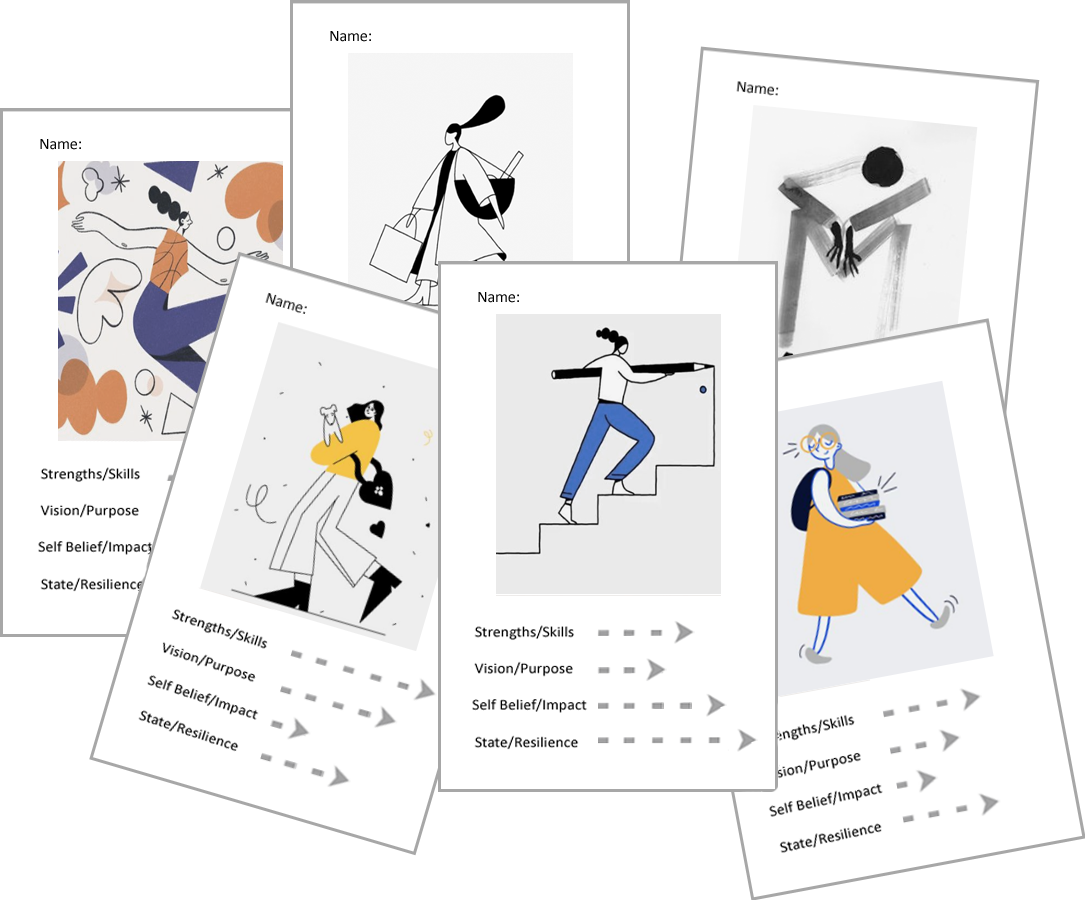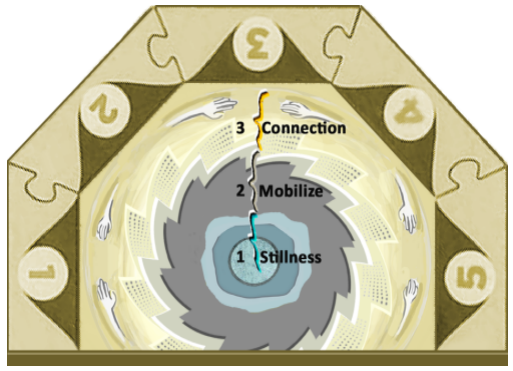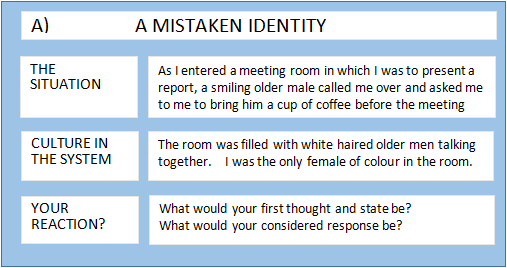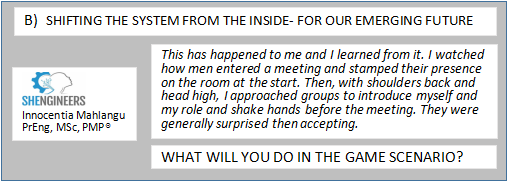AIM OF WANDERER 2030:
〰️
Dream it
Dream it
AIM OF WANDERER 2030: 〰️ Dream it Dream it
To build awareness, knowledge and Future Proof Habits for Female Engineers in Africa.
Some of the mechanics of our game … so far
(Concept draft 3) See more … Why Games? … Social Emotional Learning … Teen Needs … Social Safety …
1) Choose your role and character
Select 3 cards from the Character Deck.
You may discard the first 3 cards for a second 3 if you are not satisfied with your first hand.
Choose a role from one of your cards.
Give yourself a name and occupation.
Play your characters behaviors in the game.
You can choose a character that reflects:
your own behaviour, or
an alter-ego, or
your future self - who you wish to become.
You may discard the first 3 cards and replace them once if you are dissatisfied with your first hand.
(Concept draft 3) See more … Cards … Youth needs… Making mistakes …
2) Design agreement and boundaries for safe engagement
- Do not interrupt/talk over someone who holds the floor.
- Add anything that will support Social Safety and trust.
- What boundaries or prompts would you like to include?
- Allow time to reflect and to discuss different views.
- The host will guide the conversation along agreed lines.
(concept draft 3) Read more … Social Safety … Teen Needs …
3) Group Energy Field to navigate the future - 2030.
- Track Energy levels to promote speed and prevent burnout. The Energy Force is collective - if it fails for one, it stalls for all and ends the shared journey.
- Players build group Resilience and Smart Innovation by sharing tokens to support a distressed player.
- See ‘Shifting States Over Time’ then reflect and share:
- What was my most common state after lockdown?
- What state am I in today?
(concept draft 3) Read more … 3 States Described… Shifting Stories …
4) Start playing
See Rules for Play for details. After 10 minutes of play you may renegoatiate the rules if you wish. The host has the final say.
5) Scoring the Emerging Future
Score points on the Mastery Ladder using Character and Energy State to impact your shared story.
(concept draft 3) More on … Resilience … Work Index … SDGoals …
6) Navigate A Situation
When the Spinner points to The Situation then take a card from the Situation Deck.
- The player reads out the top 3 paragraphs that describe the dilemma then pauses to consider and answer the questions about their reaction and response. The group then adds their comments.







